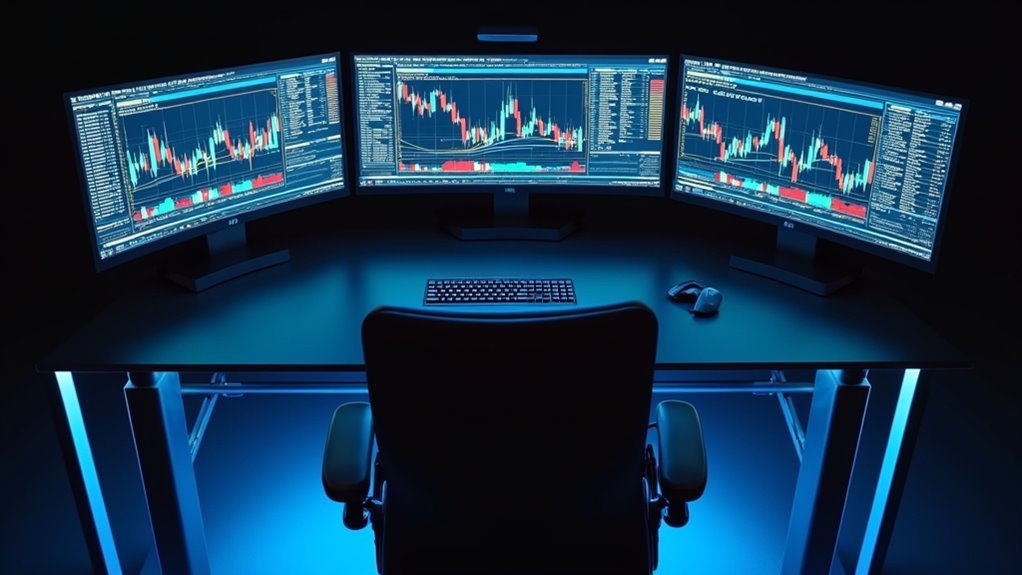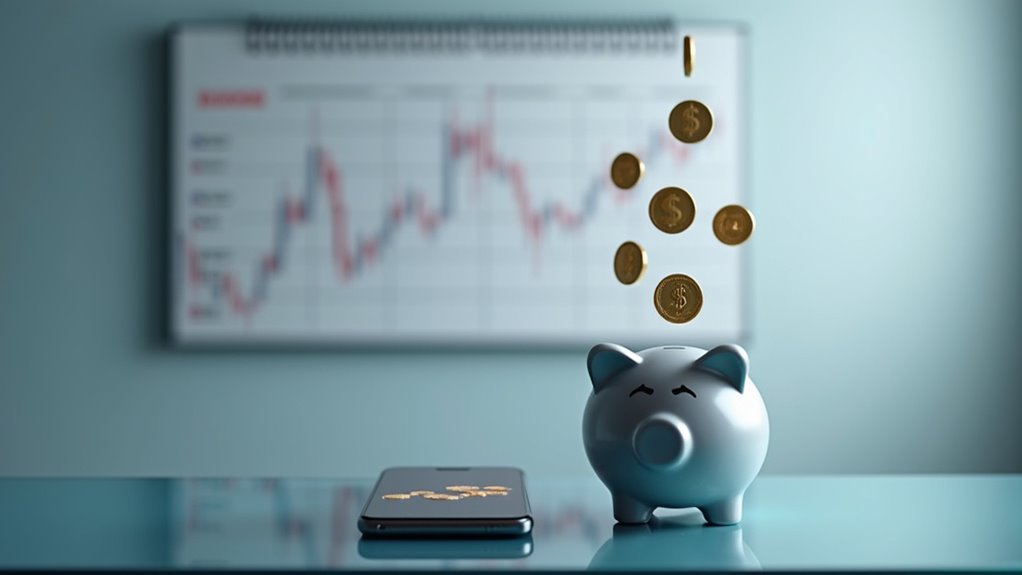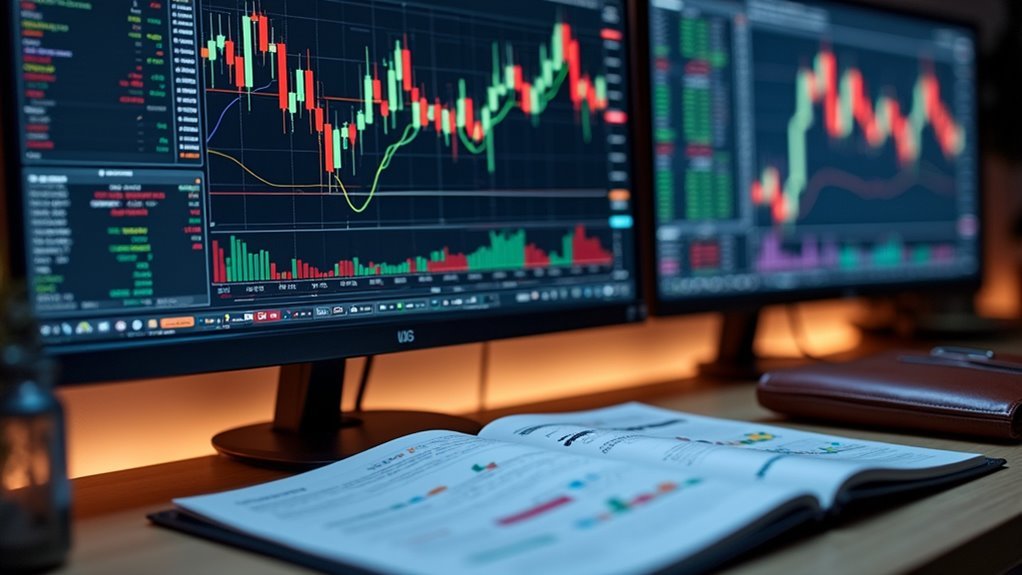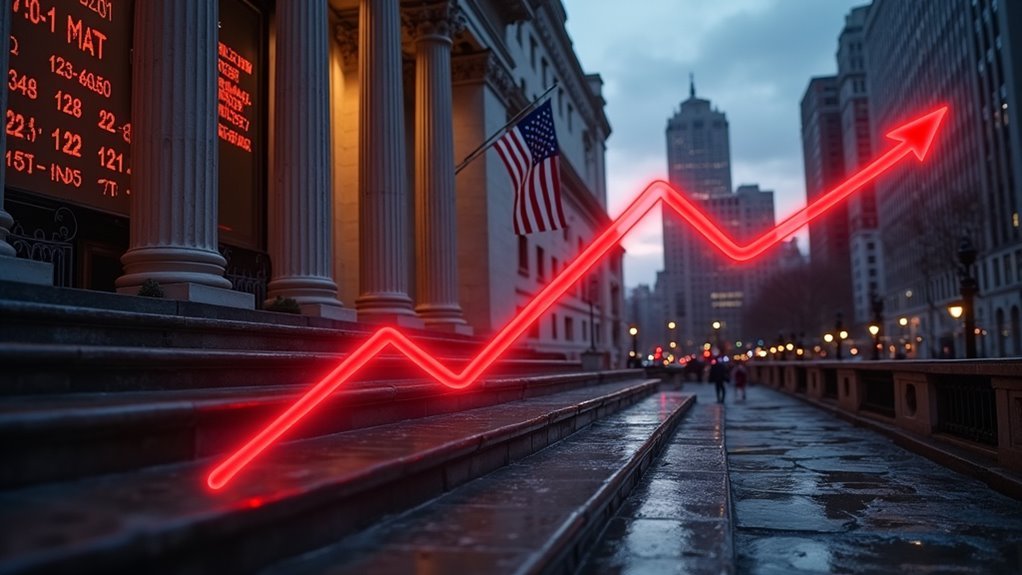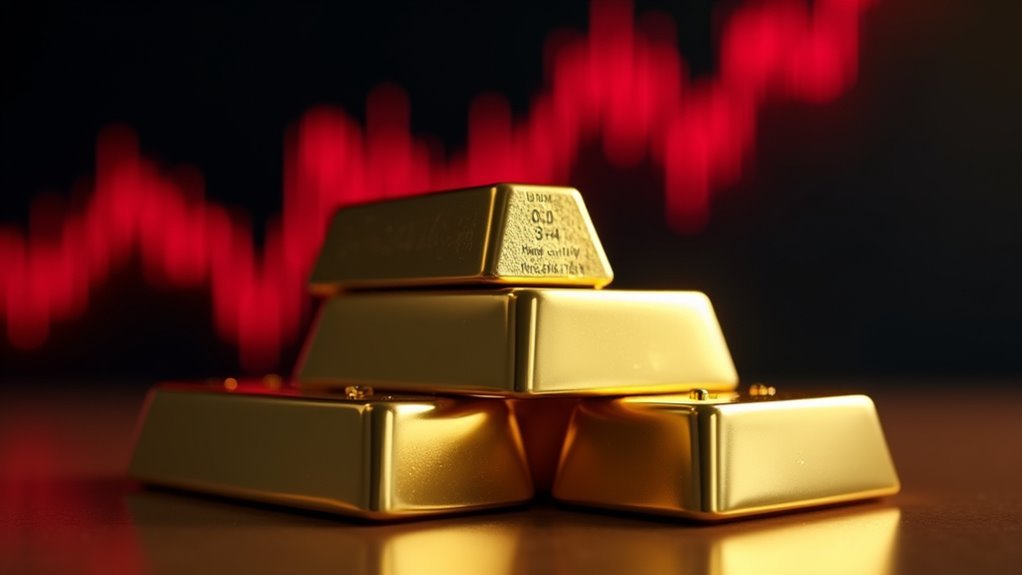Exchange-traded funds (ETFs) are investment powerhouses that work like mutual funds but trade like stocks on exchanges. These versatile vehicles let investors buy baskets of securities – from stocks to bonds to commodities – in a single transaction. ETFs typically cost less than mutual funds, offer better tax efficiency, and provide instant diversification across markets or sectors. While they carry market risks like any investment, their transparency and flexibility make them increasingly popular. There’s more to unpack about these financial Swiss Army knives.

The humble Exchange-Traded Fund, or ETF, has revolutionized how regular folks invest their money. These investment vehicles are fundamentally mutual funds that trade like stocks – simple as that. They track everything from broad market indexes to specific sectors, commodities, or even currencies. And unlike their stuffier mutual fund cousins, ETFs tend to be cheaper and more tax-efficient. This robust diversification strategy helps investors spread their risk across multiple assets.
ETFs brought Wall Street to Main Street, giving everyday investors a simple, affordable way to own slices of the market.
Here’s the cool part: ETFs are fundamentally baskets of securities that you can buy and sell throughout the trading day. Want to invest in the entire S&P 500 with a single click? There’s an ETF for that. Fancy getting exposure to gold without storing bars in your basement? Yep, there’s an ETF for that too. They’re transparent too – most ETFs show exactly what they own every single day, no secrets kept.
The mechanics behind ETFs are pretty slick. Special firms called authorized participants handle the creation and redemption of ETF shares, keeping their prices in line with their underlying assets. Most ETFs feature lower expense ratios since they’re passively managed. You can trade them through any regular brokerage account, using all the usual tricks – limit orders, stop-losses, even options if you’re feeling fancy. Many investors use dollar-cost averaging to build their ETF positions systematically over time.
But let’s not pretend ETFs are perfect. They come with their own set of risks, just like any investment. Markets go down? Your ETF goes down too. Some niche ETFs barely trade at all, making them hard to buy or sell quickly. And those exotic synthetic ETFs? They’ve got counterparty risk lurking in the shadows.
The regulatory folks keep a close eye on ETFs, particularly in the U.S. where they fall under the Investment Company Act of 1940. Europe has its own rules under MiFID II, and regulators worldwide are constantly updating their playbooks, especially when it comes to complex products like leveraged ETFs.
Bottom line: ETFs have democratized investing by offering cheap, efficient access to practically every corner of the financial markets. They’re not exactly exciting dinner party conversation material, but they’ve changed the investment landscape forever. Just remember – boring doesn’t mean bad.
Frequently Asked Questions
What Is the Minimum Investment Required to Start Investing in ETFS?
Most ETFs don’t have a set minimum investment – you just need enough to buy one share.
Share prices vary wildly, from under $50 to hundreds of dollars.
Thanks to fractional shares, investors can start with as little as $1-$5 at many brokers.
Popular broad market ETFs like SCHB and ITOT trade under $100 per share, while others like SPY cost around $400.
No fancy account minimums required.
How Do ETF Fees Compare to Traditional Mutual Fund Fees?
ETFs generally have lower fees than mutual funds – it’s not even close. Average ETF expense ratios run 0.16% for index ETFs versus 0.60% for index mutual funds. Active ETFs cost around 0.69% while active mutual funds hit 0.89%.
But that’s not all. Mutual funds often pile on extra charges like front-load fees (5%), marketing fees (1%), and redemption fees. ETFs skip most of these costly add-ons.
Can I Lose All My Money Investing in ETFS?
While it’s technically possible to lose everything with certain risky ETFs, total loss is highly unlikely with broad-market ETFs.
Regular ETFs mirror their underlying assets – if the whole stock market crashes, the ETF follows suit.
But here’s the kicker: the market would need to literally hit zero for a complete wipeout.
Leveraged and exotic ETFs? Different story. Those can definitely torch your money faster than a campfire marshmallow.
Are ETFS a Good Investment Choice for Retirement Accounts?
ETFs make a lot of sense in retirement accounts. Their low costs and broad diversification help grow retirement savings over time.
They’re simpler than picking individual stocks, and many track reliable market indexes. The tax efficiency matters less in retirement accounts, but the easy trading and flexibility are nice perks.
Not all ETFs are retirement-worthy though – those exotic ones that track obscure sectors? Maybe not so much.
How Quickly Can I Sell My ETF Shares if Needed?
Most ETF shares can be sold almost instantly during regular market hours. Market orders execute immediately, though the price might sting. Highly liquid ETFs – think popular index funds – trade in seconds. Boom, done.
However, less liquid ETFs or large sell orders could take longer to execute. Order size matters. Selling a million shares? Yeah, that’ll take more time than dumping a hundred.

